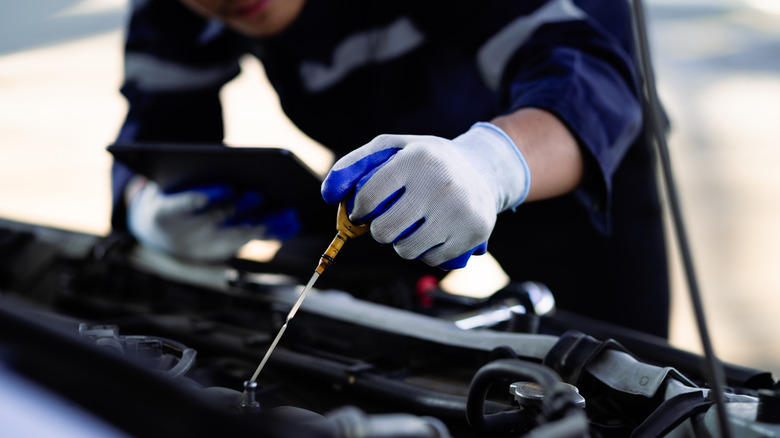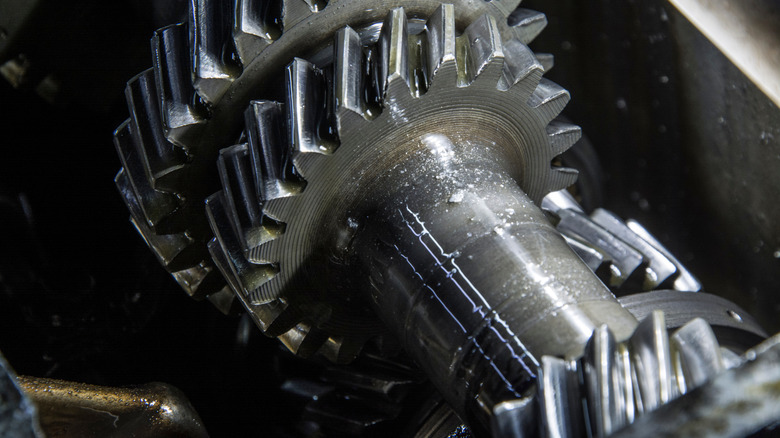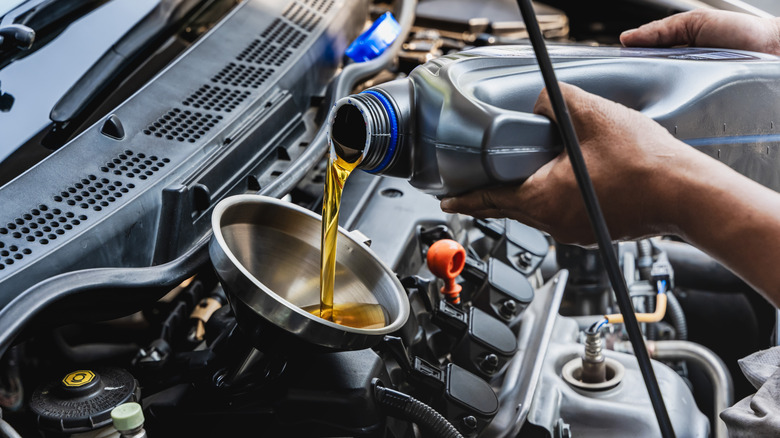What Metal Shavings In Your Oil Could Mean (And Is It Concerning)
Engines are incredibly complex pieces of precision engineering. They operate within extremely fine tolerances, with components spinning at thousands of RPM for hours without missing a beat. The key to keeping all these moving parts functioning smoothly is engine oil. Oil is the lifeblood of an engine, it lubricates, it cools, and it prevents wear. In simple terms, it prevents too much metal-on-metal interaction in an engine. What this means is that finding metal shavings in your engine oil is something that needs to be addressed as a priority.
However, any in-depth inspection of engine oil will inevitably find traces of metal, this is normal and isn't necessarily a sign of an impending failure. So, just how do you tell the difference between harmless particles and a more serious, potentially catastrophic problem? This article examines what metal shavings in your oil could mean and when you should be concerned about it.
Types of metal shavings and what they indicate
First, let's address a common misconception that all metal particles in your oil mean your engine is on the verge of a catastrophic failure or has a serious problem. For instance, it's quite possible for your engine to "ingest" metal particles from outside. There are also allowable limits of wear and tear metals that are quite normal in engines. The precise amounts of these vary by engine type. Typical figures include about 300 parts per million (ppm) for iron and below 30 ppm for lead and copper. In most instances, the oil filter will ensure that these particles are captured and prevented from circulating further, minimizing the risk of damage.
However, there are times when metal shavings can be a sign of a more significant issue and should definitely be of concern. In these cases, the type of metal shavings can offer clues as to the part of the engine that could potentially be wearing down. For instance, if the shavings have a silver or steel-like appearance then the problem could be with pumps, bearings, or pistons. If the shavings are coppery or bronze in color, then the problem is usually associated with excessive bearing wear. Ultimately, any sudden increase in metal shavings in your engine oil should be taken seriously and addressed quickly. Metal shavings can quickly gouge and damage further parts of your engine as they circulate with the engine lubricant.
What causes metal shavings in engine oil and what are the signs to look out for?
Instances where the cause lies within the engine can often be summarized in one word: friction. It's the friction between moving parts in the engine that oil is designed to minimize. Over time, this friction can lead to the wear and tear of various engine components such as pistons, rods, and bearings. While some degree of friction and wear is inevitable, it's when friction levels rise above acceptable tolerances that problems can arise. In many cases, excessive friction can be directly attributed to low oil levels, clogged oil filters, or lubricants that have degraded to the point they no longer function as they're supposed to. Other causes can include bearing failures and plain old mechanical wear and tear.
There are a few common signs that could signify the presence of metal shavings in your engine oil. Most obviously, is the visible presence of metal flakes or shavings on your dipstick or in oil drained from your engine. Less obvious signs to look for include ticking noises, reduced engine power, abnormally white exhaust fumes, and your engine doesn't run smoothly when ticking over.
Minimizing the risk and what to do if it happens
Engines are complex mechanical wonders that, for the most part, work uncomplainingly for years. However, a little TLC goes a long way to ensuring that happens. To minimize the risk of metal shavings appearing in your oil, this TLC takes the form of regular maintenance. Specifically, regular oil and filter changes that adhere to the manufacturer's recommendations. Also, remember to check that the correct grade of oil is always used. In between these services, it's good practice to keep an eye on your oil levels. Low oil levels can quickly damage an engine. The dipstick is an important ally here and is worth checking regularly. Other signs of low engine oil levels include excessive rattling or knocking sounds, billowing exhaust smoke, oil warning lights, and sluggish acceleration.
While these measures will help to minimize the risk, they can't completely negate it. If you do notice signs of an excessive metal presence in your oil, then immediate action is necessary. The earlier such circumstances can be addressed, the less chance there is of severe damage occurring. A visit to a professional mechanic is highly recommended, they will be able to diagnose where the problem lies and recommend what repairs or parts are needed.
In short, a little metal found in engine oil is normal, it's when there are noticeable metal shavings present when the problem is concerning. Finally, it's also worth noting that metal shavings can appear in other systems like the transmission and power steering system, so it's also worth keeping an eye on these as well.



